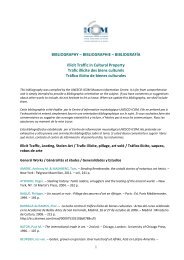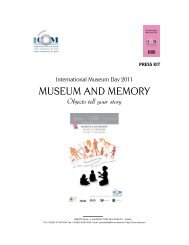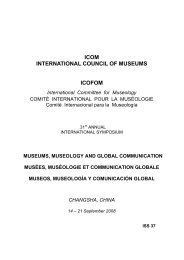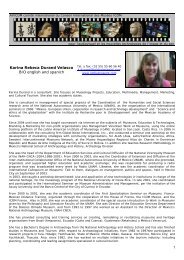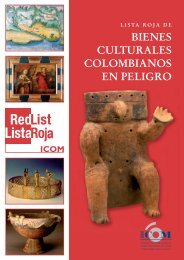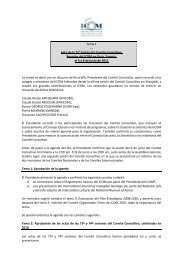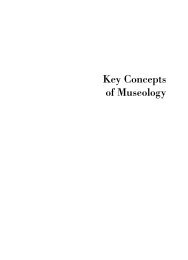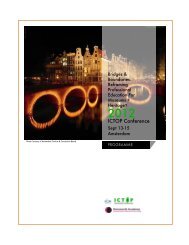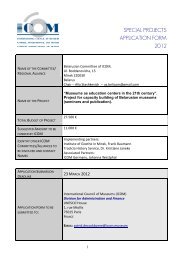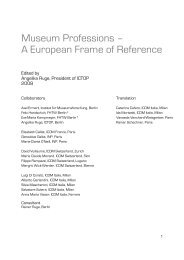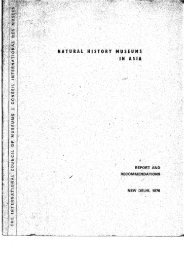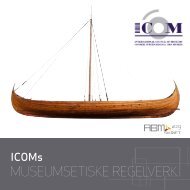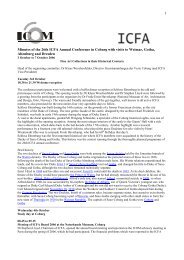ISS 25 (1995).pdf - The International Council of Museums
ISS 25 (1995).pdf - The International Council of Museums
ISS 25 (1995).pdf - The International Council of Museums
Create successful ePaper yourself
Turn your PDF publications into a flip-book with our unique Google optimized e-Paper software.
fees for services and admissions in an attempt to increase the notion <strong>of</strong> their value. As such,<br />
the larger notions <strong>of</strong> nationalism and abstract notions such as democracy and evolution have<br />
a more difficult time in aligning paths <strong>of</strong> historical truth <strong>of</strong> the display <strong>of</strong> their material.<br />
This drive behind the museum-community interface has created changes to the financial bases<br />
<strong>of</strong> museum, where museums are now actively soliciting funds, charging higher and higher<br />
admissions and memberships and becoming special-public oriented; it has created a political<br />
demand from the community which is wanting to have the museum reflect a particular public's<br />
concerns and notions <strong>of</strong> historical truth; it has created a marketplace atmosphere where value<br />
and service are determined through a kind <strong>of</strong> auctioning process. <strong>The</strong> reactive/responsive<br />
contemporary museum has both gained and given power in its newly defined role with the<br />
community. Because <strong>of</strong> the museum's visibility, it is seen to be a focal place for ideas, and this<br />
gathers status and influence for the institution, while on the other hand, the community's use<br />
<strong>of</strong> the museum has gained for itself a power base from which it can disseminate its messages.<br />
Tourism<br />
<strong>The</strong> financial dependence <strong>of</strong> museums on communities is readily seen in the tourism industry<br />
where the tourist anticipation <strong>of</strong> what objects they would be willing to pay admission to see<br />
determine the size and content <strong>of</strong> museological display, and in a very real sense, the tourist is<br />
a nomadic community which strongly influence museums as points <strong>of</strong> destination. Millions <strong>of</strong><br />
people travel the world to visit specific locations which are providing known collections <strong>of</strong><br />
objects which have been advertised as being available for tourist consumption.<br />
Anticipation and Reality<br />
Many museums are having to reconcile their museological objectives which may have, for<br />
example, academic, ethnographic, or archaeological quests for education or discovery, and are<br />
having to modify these intellectual ambitions with the "real" demands from various public<br />
communities.<br />
It is also noted that the world's populations are desiring more to be entertained rather than<br />
educated; they are being accustomed to mass entertainment models and expect the same from<br />
their institutions which portray their history; and that people, more and more, are desiring<br />
interactive rather than passive displays.<br />
<strong>The</strong> museum will continue to be a house where history is stored though the stories depicting<br />
the evolution <strong>of</strong> peoples will continue to change as the social fabric <strong>of</strong> the community evolves.<br />
Lynn Maranda, Vancouver Museum, Canada<br />
71<br />
14 March <strong>1995</strong>



